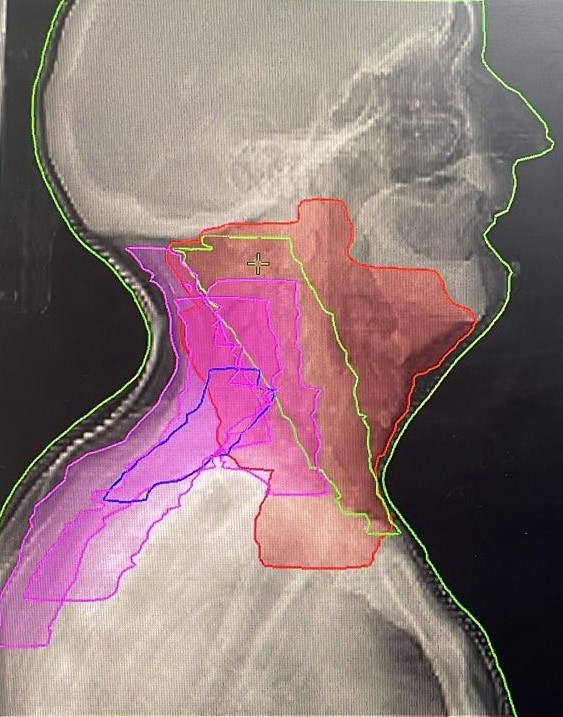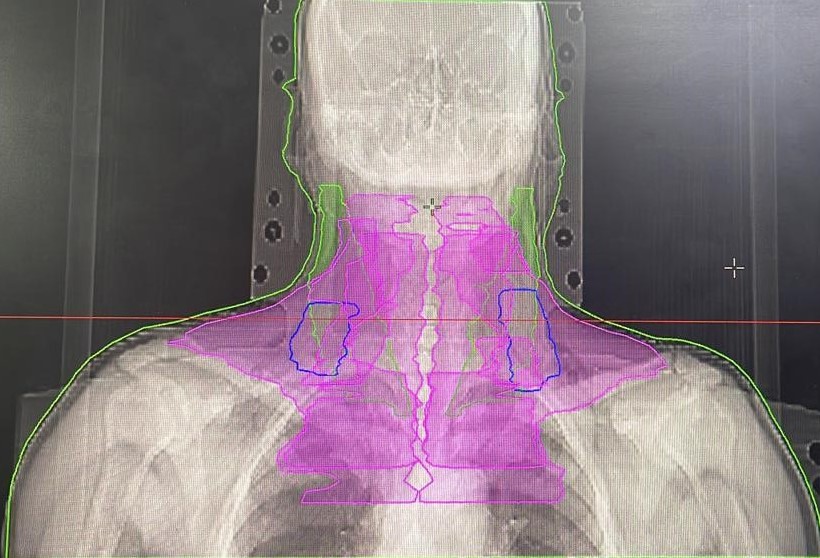Radiation induced myopathy of neck muscles with IMRT - A study of dosimetry and clinical correlation
PO-1223
Abstract
Radiation induced myopathy of neck muscles with IMRT - A study of dosimetry and clinical correlation
Authors: Himanshi Khattar1, Piyush Kumar1
1Shri Ram Murti Institute of Medical Sciences, Department of Radiation Oncology, Bareilly, India
Show Affiliations
Hide Affiliations
Purpose or Objective
Purpose- Radiotherapy (RT) plays a major role in the management of head and neck cancers . Acute and long-term sequelae of radiotherapy are highly prevalent which have substantial impact on the quality of life of the patient. Radiation-induced toxicity is a major cause of long-term disability after head and neck cancer treatment, such as subcutaneous soft-tissue fibrosis, neck muscle atrophy, swallowing abnormalities, and trismus. Neck muscle atrophy and soft-tissue fibrosis have received little attention in the clinical literature. The present study is done to assess the dose going to the neck muscles in patients treated by IMRT plans and to correlate clinically and radiologically the long-term outcomes of radiation induced myopathy in neck muscles.
Aims and objectives- To assess the Dosimetric parameters of neck muscles in head and neck cancers patients treated with concurrent chemo-radiation by Intensity modulated radiotherapy (IMRT) technique & to clinically correlate the Dosimetric parameters with neck muscles toxicity
Material and Methods
Forty patients were included in this study from Aug 2020 to Sept 2021. All patients were planned and delivered standard definitive radiotherapy a dose of 70 Gy in 35 fractions over 7 weeks along with Concurrent Cisplatin at 35 mg/m2 IV infusion weekly. The neck muscles were delineated. No dose constraint was prescribed to the neck muscles. Dosimetric parameters of neck muscles were assessed. After six months’ post treatment, the patients were assessed for Radiation induced myopathy in neck muscles and were compared to pre treatment. The neck muscle toxicity was assessed by the clinical symptoms and by neuro-physical examination. Analysis was done by using latest SPSS software.
Results


Among forty patients, twenty patients (50%) developed clinical signs and symptoms of musculopathy. Among these patients, the most common symptom was pain (60%) and stiffness (60%). Other toxicities included rigidity (40%) and difficulty in neck movements (20%). The highest mean doses were received by SCM and scalene muscles receiving 70Gy & 68Gy respectively. V30 of trapezius, SCM, scalene, capitus & levator scapulae were 31%, 91%, 93%, 56% & 73%. Function of the muscles when compared to pre and post CTRT were as follows- shrugging of shoulder (50%); head tilt test and rotation of head (40%) each and the p values were significant (p< 0.05); flexion and extension of head – (10%) and overhead abduction was not seen in any of the patients. The most common grade of weakness of the neck muscles were grade I followed by grade II & none of the patients developed grade III weakness. The median latency period of developing these symptoms was 2.5 to 3 months.
Conclusion
Radiation induced myopathy in neck muscles is one of the late complications in head and neck cancers, which is not clinically assessed or detected. Therefore, neck muscles must be considered as an OAR in the contouring of head and neck cancers. Further studies with longer follow up are needed.